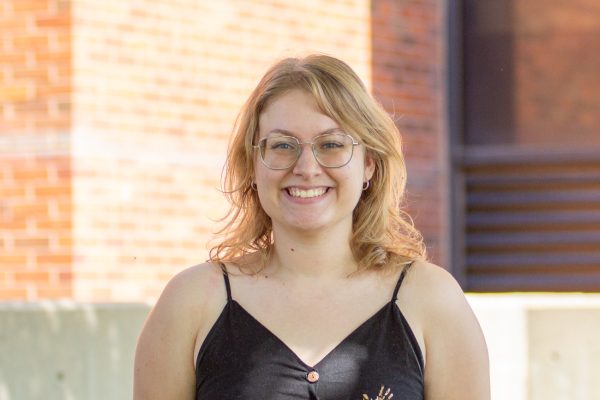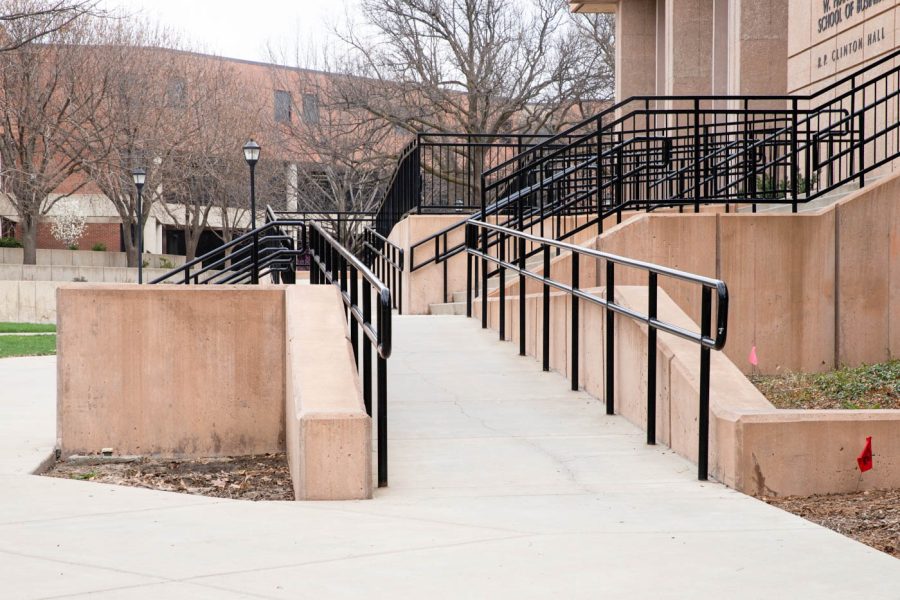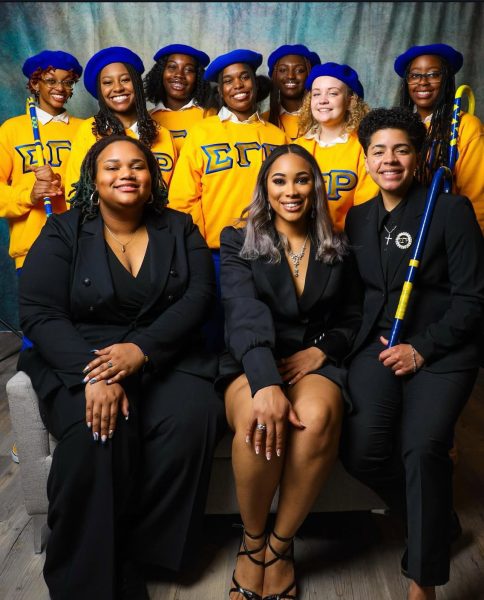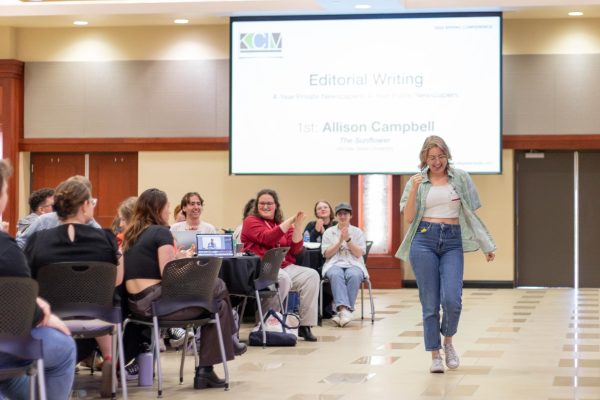OPINION: Disability access on campus does not excel in being disability friendly
This ramp is attached to Clinton Hall. Clinton Hall is located on the North side of WSU’s campus. “For a student with disabilities, the differences that these absences create can turn a simple process into a serious struggle,” Columnist Allison Campbell writes.
Anyone who has had to travel by foot on campus knows that it can be difficult because of long distances between buildings. For many freshmen it’s hard enough to navigate campus without getting lost or running late. For students with disabilities, the challenges escalate. Hidden stairways, obscure disability-friendly restrooms and a lack of ramps and dysfunctional automatic doors are just a few of the challenges that disabled WSU students have to work around.
In a recent study conducted by Spectrum, an on-campus organization, several on-campus restrooms lack larger stalls and automatic doors for students who may be physically impaired. As a Spectrum officer and as a concerned student, this project not only revealed to me that campus is lacking promised disability-friendly options, but that WSU staff and faculty do not care enough to pursue correcting the issue themselves. Instead, our members had to take the time to collect data that should have been the school’s priority. The information we were provided from the school was years old and not only did not have information on every building, but much of the provided data was incorrect. Many restrooms that were marked as being available or accessible were not easily found by Spectrum members. If a tasked team can’t find restrooms labeled as accessible, how can we expect students to find them when they need them?
Several buildings frequented by both students and guests to campus, such as the Student Athlete Center, were recorded as accessible, yet they did not have baby-changing stations available. A staggering number of facilities on campus were recorded as having only gendered restrooms and no available gender neutral, family or unisex restrooms.
Of the 30 locations scheduled to be checked by Spectrum, 11 were completely inaccessible and could not be checked. Two restrooms, located in the basement of Jabara Hall, were inaccessible and did not have baby-changing stations. Other locations, such as Wallace Hall, were missing features such as bag hooks. For a student with disabilities, the differences that these absences create can turn a simple process into a serious struggle.
The RSC is also known for its fickle accessibility points. Several doorways are just barely large enough to fit the width of a wheelchair and nearly all of the restrooms have the larger stall cornered in the very back, making it even more difficult for students with disabilities to access them. According to the ADA Requirements for Commercial Building and Existing Facilities, every building is required to have wide enough doorways to accommodate wheelchair users. While campus buildings may meet this measurement, doing so by the bare minimum is not in the best interest of students. Many of the marble, slick stairs also pose a danger to those with walking impairments. We cannot prioritize a sleek design over the safety of students.
The elevators on campus are also acceptable but not user friendly. Several elevators in the older buildings are much too small and can make entry difficult for individuals who may use wheelchairs or crutches. The Engineering Building is one of these; steep stairs coupled with a small, dingy elevator is not a great combo for students with disabilities.
The easiest solution, without completely tearing down and rebuilding several parts of campus, is for WSU Disability Services to put themselves in the positions of the students they aim to help. Students with disabilities could be financially compensated for walking around campus with a Disability Services staff member and taking notes of inaccessible or difficult to reach areas. What better way to accommodate the needs of students with disabilities than allowing them to voice their concerns and suggestions? The needed corrections could be made and a “suggestions” box could be created so that students with disabilities can continue to advise faculty on necessary changes. WSU students with disabilities have had to struggle far too long to be heard. It’s time for WSU to accept the responsibility and make serious efforts to make campus 100% accessible and friendly to all students.

Allison Campbell was the editor-in-chief of The Sunflower during the 2024-2025 year. Campbell is a senior pursuing a journalism and media production...










Valerie Kretchmar • Apr 6, 2022 at 5:05 pm
My experience at the arena, a handicap/family restroom, they have 2 posted, but one has been made into a breast feeding room. So having to go clear around the arena is not very convenient for a disabled person that has to have total assistance. The regular bathrooms with handy cap stalls are not large enough, and also a woman taking her dad in a womans restoom, is a little shocking for some.